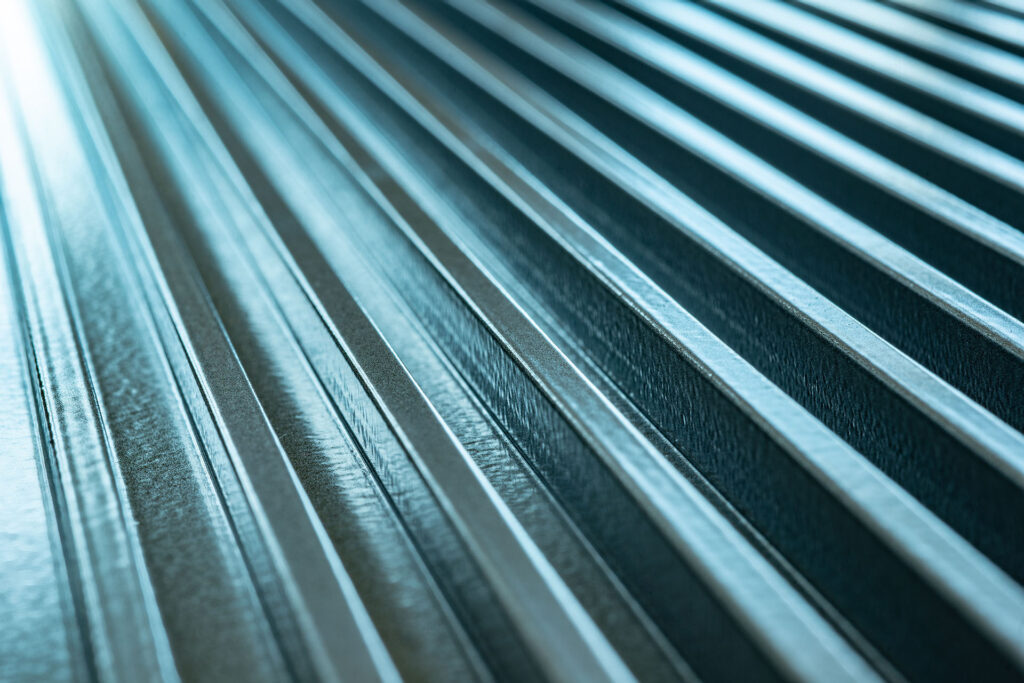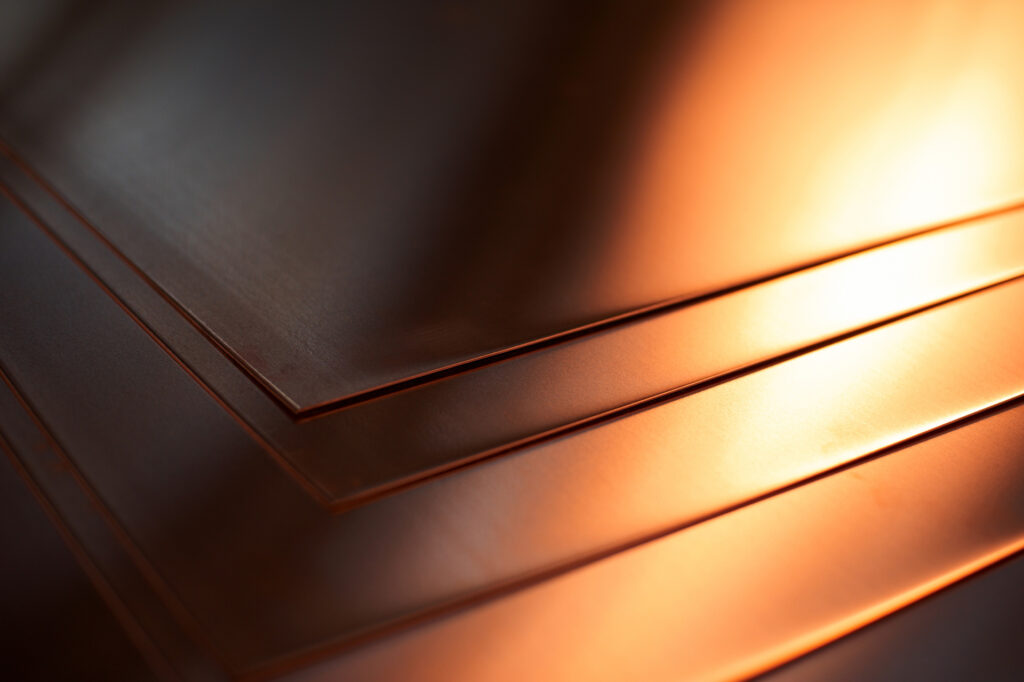10130 Mallard Creek Rd
Suite 300 Charlotte
NC 28262
Metal Roofing
Types of Panels

5V Crimp
This traditional panel option features an exposed fastening system, offering a classic appearance and exceptional durability for both residential and commercial properties.

Standing Seam
Snap-lock panels offer a clean, seamless finish with concealed fasteners, ideal for those looking for a sleek, modern roof with minimal maintenance.

Metal Tile
Metal tiles combine the durability of metal with the traditional look of tile roofing, creating a versatile, lightweight roofing solution that’s perfect for homeowners seeking both style and longevity.
Metal Types

Steel
Galvalume is a premium galvanized steel product, featuring a protective aluminum and zinc coating. This advanced coating delivers exceptional corrosion resistance and long-lasting durability, making it an ideal choice for most roofing applications.

Aluminum
Aluminum is the lightest metal roofing material on the market. Highly resistant to corrosion from saltwater spray, it’s another excellent option for coastal areas. Aluminum’s natural reflectivity helps keep buildings cooler, while its outstanding malleability makes it ideal for intricate roofing profiles and designs.

Copper
Copper is renowned for its beauty, superior surface finish, and precise physical properties. copper panels are resistant to weather, wind, and fire, requiring little to no maintenance. With this exceptional durability, copper roofs can last for generations, developing a stunning greenish-blue patina as they age.
Installation Process
1. Remove Old Roof & Inspect Deck
Begin by stripping away the old roofing material to reveal the roof deck. Inspect the deck for damage and make any necessary repairs before proceeding with the installation.
2. Install High Temp Self Adhered Underlayment
The underlayment is applied over the existing roof deck. This layer provides additional protection against moisture and helps prevent leaks.
3. Attach Starter Strips
Place starter strips along the eaves and edges to ensure the first row of metal panels is securely fastened and properly aligned.
4. Install Metal Panels
Install metal panels starting from the eaves and working upwards, overlapping each panel for effective water runoff. Fasteners may be exposed or concealed depending on the panel type for a streamlined look.

5. Install Flashing & Trim
Metal flashing is installed around roof penetrations such as chimneys, vents, and skylights to prevent water leaks. Trim pieces are added to corners and ridges for a clean, finished look.
6. Final Inspection
Once the metal roof is installed, a thorough inspection is performed to check for proper alignment, fastener security, and overall quality.
Metal Roofing Gallery
Metal Roofing Questions
What is the lifespan of a metal roof?
Depending on a variety of factors including region & installation method. Metal roof systems can last upwards of 50 years.
How long does it take to install a metal roof?
The average metal roof system takes about a week to install.
What wind speeds can a metal roof withstand?
Wind speeds vary depending on the individual system. Most metal roofs can withstand speeds above 150 mph.
How does saltwater affect a roof?
Saltwater poses a unique set of issues to a roof. The extreme environment takes its toll on traditional steel panels. The best solution is to utilize aluminum or copper panels.



